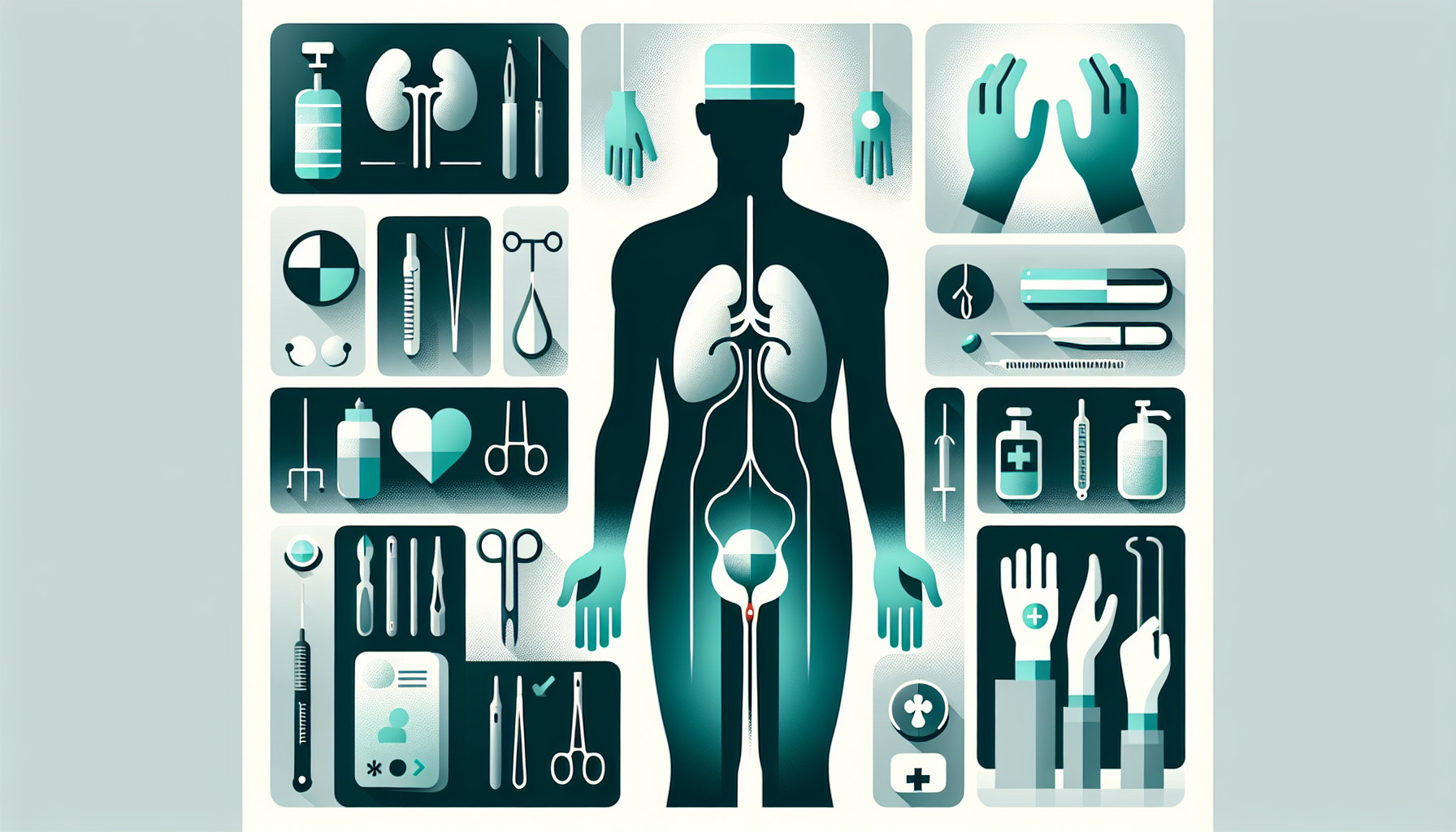Our Summary
This research paper presents a case of a rare but potentially deadly complication that can occur during surgery, known as pneumothorax, which is when air or gas gathers in the chest, causing the lung to collapse. In this case, the patient, a 27-year-old woman undergoing a kidney surgery, experienced a large and symptomatic pneumothorax caused by carbon dioxide (CO2) at the end of her surgery. This led to a significant drop in oxygen levels and blood pressure, leading her to lose consciousness.
Using manual ventilation, the medical team was able to restore her oxygen levels and blood pressure, and she regained consciousness. A chest X-ray revealed a large pneumothorax occupying 70% of her chest. Instead of draining her chest, the team decided to treat her with supplemental oxygen therapy.
By the fifth day after her surgery, the woman was able to be discharged without any further complications. The paper concludes by suggesting that this type of pneumothorax could be absorbed quickly, and that non-invasive treatment could be an effective approach. It also suggests that ultrasound could be a useful tool for diagnosing this condition. The case underlies the importance of being aware of this possible complication during surgery and considering non-invasive treatment options.
FAQs
- What is pneumothorax and how can it occur during surgery?
- How was the pneumothorax in the patient treated and what was the result?
- What are the suggestions made by the research paper to handle such complications in the future?
Doctor’s Tip
A doctor might tell a patient undergoing nephrectomy to be aware of the potential risk of pneumothorax and to notify their healthcare provider immediately if they experience symptoms such as chest pain, difficulty breathing, or a sudden drop in oxygen levels. They may also recommend close monitoring and possibly imaging studies to detect any potential complications early on.
Suitable For
Patients who are typically recommended for nephrectomy include those with:
Kidney cancer: Nephrectomy is often performed to remove a tumor in the kidney, especially if it is large or aggressive.
Kidney disease: Nephrectomy may be recommended for patients with chronic kidney disease or polycystic kidney disease that is causing significant symptoms or complications.
Kidney donation: Nephrectomy is performed on healthy individuals who choose to donate one of their kidneys to a family member, friend, or stranger in need of a kidney transplant.
Kidney trauma: Nephrectomy may be necessary in cases of severe kidney injury, such as from a car accident or sports injury, when the kidney is too damaged to repair.
Kidney obstruction: Nephrectomy may be recommended for patients with a blocked or obstructed kidney that cannot be treated with other interventions.
Kidney infection: Nephrectomy may be necessary in cases of severe kidney infection that does not respond to antibiotics or other treatments.
Other kidney conditions: Nephrectomy may be considered for patients with other rare or complex kidney conditions that cannot be effectively treated with other methods.
It is important for patients considering nephrectomy to discuss the risks and benefits of the procedure with their healthcare provider and to carefully weigh their options before proceeding.
Timeline
Before nephrectomy:
- Patient undergoes pre-operative evaluations and tests to assess their overall health and readiness for surgery.
- Patient meets with their healthcare team to discuss the procedure, risks, and potential complications.
- Patient may undergo imaging tests such as CT scans or ultrasounds to determine the size and location of the kidney tumor.
- Patient may need to make lifestyle changes or adjustments to their medication regimen in preparation for surgery.
During nephrectomy:
- Patient is prepped for surgery and given anesthesia to ensure they are comfortable and pain-free during the procedure.
- Surgeon removes the affected kidney (partial or total nephrectomy) along with any surrounding tissues if necessary.
- Surgery typically lasts a few hours, depending on the complexity of the case.
- Patient is closely monitored during and after surgery for any signs of complications.
After nephrectomy:
- Patient is taken to a recovery room where they are monitored for any immediate post-operative complications.
- Patient may experience pain, discomfort, and fatigue in the days following surgery.
- Patient may need to stay in the hospital for a few days for further monitoring and pain management.
- Patient will be given instructions on how to care for their incision site, manage pain, and gradually resume normal activities.
- Patient will have follow-up appointments with their healthcare team to monitor their recovery and assess any long-term effects of the surgery.
What to Ask Your Doctor
What are the potential risks and complications associated with nephrectomy surgery, including the risk of pneumothorax?
How often do complications like pneumothorax occur during nephrectomy surgery?
What steps will be taken to monitor for and prevent pneumothorax during the surgery?
How is pneumothorax typically treated if it occurs during or after nephrectomy surgery?
What are the signs and symptoms of pneumothorax that I should watch out for after the surgery?
What is the likelihood of experiencing a pneumothorax after nephrectomy surgery, and how can it be prevented?
Are there any specific risk factors that may increase my chances of developing pneumothorax during the surgery?
How will my recovery and post-operative care be affected if pneumothorax occurs during or after the surgery?
Are there any alternative treatment options or techniques that can help reduce the risk of pneumothorax during nephrectomy surgery?
What follow-up care or monitoring will be necessary to ensure that any potential complications, including pneumothorax, are promptly addressed?
Reference
Authors: Wu Q, Zhang H. Journal: BMC Anesthesiol. 2018 Dec 22;18(1):202. doi: 10.1186/s12871-018-0662-x. PMID: 30579345
